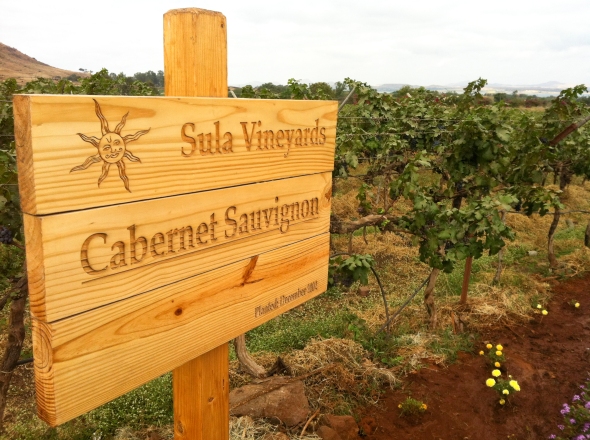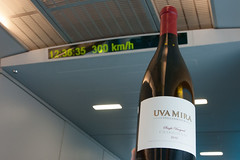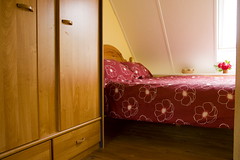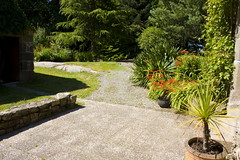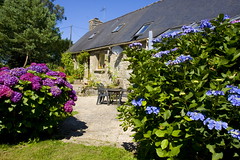Sula Vineyards and Indian Trains
“ONE TWO ONE SIX FIVE….(unintelligible rambling)……MUMBAI TO VARANASI DEPARTS FROM PLATFORM 1 AT 0520” shrieks the high pitched female announcer on PA system. She repeats rapidly 15 times, pauses for breath and starts again.
Mumbai’s Lokmanyatilak station is very much alive and bustling at 5 in the morning. Crowds are moving in all directions, getting on trains, getting off trains, waving goodbye to family and friends. I’ve only had 1 hour of sleep after flying from Hong Kong to Mumbai but the raucous energy and adrenaline of the surging masses around me is infectious. Throw in the fact that this is the first time I’ve been brave enough to use the notorious Indian rail system, and my sense of adventure is starting to build, but please turn down the PA volume!
(Apologies for the poor quality of photos in this post. I only had my iPhone with me which doesn’t cope well in low light.)
I’m off to visit Sula Vineyards to the west of Nashik which is a medium sized town some 170km north-east of Mumbai. The train is packed and I was fortunate to buy the last ticket in AC-2 car, the highest class of carriage on this particular train. It is remarkably comfortable and a world away from the shockingly crowded images that we have all seen of people on roofs and hanging on to the outside of trains. I have to walk past a dozen ‘Sleeper’ class carriages – don’t even think of travelling this way, ‘sleeper’ isn’t really an accurate description! – and find my carriage about 1/2 a mile down the platform. I’m pleasantly surprised to find a bed berth complete with a package containing clean sheets and a blanket. It’s 3 1/2 hours to Nashik and I need some sleep.
The ticket cost me 478 Rupees, or about £6, which seems like a bargain especially as the train left on time to the second. It’s easy to scoff at many things in India from our ‘civilised’ perspective but they do seem to get some things right. Although, as will become clear, this system seems to hang on a knife edge and chaos is never really that far away.
India is not exactly well known for its wines of course but Sula is one of the leading producers in the state of Maharashtra and they have a well established tasting room and winery tour. Sula launched their first wines in 2000, Sauvignon Blanc and Chenin Blanc. This has been followed by with Zinfandel, Cabernet Sauvignon, Shiraz, Grenache and even Riesling.
The general climate in India is not ideally suited for the production of high quality grapes. At 200N latitude it is well outside the traditionally accepted wine growing zone of 300 – 500 and suffers from too much heat, too much rain and too much summer! The growing season is reversed, following the southern hemisphere timings avoiding the monsoon season of June to September and the torrential thunderstorms the SW monsoon brings. Harvest normally takes place between February and April.
Despite these climatic problems, there is a steadily growing and thriving wine industry that is paying attention to quality issues and to producing commercially successful wines. High taxes on imported wines have allowed the industry to establish itself and grow without facing the cut-throat reality of competition from international brands. Fine wines are prohibitively expensive in India but a growing interest in wine from an increasingly affluent middle class is likely to increase pressure for some of these taxes to be reduced. Large multinationals such as Diageo are also lobbying aggressively to gain entry in to the market and it’s only a matter of time before home grown wines will have to adapt and compete on a more level playing field.
The current approach seems to be conservative and the wines reflect this having a distinct ‘middle of the road’ feel to them, designed to appeal to a mass market rather than wines of character. I didn’t come across any wines that were ambitious, idiosyncratic or genuinely exciting. Many of the wines could be described as commercial and had a touch of residual sugar to them. While this may help pair them better with some spicy Indian dishes, once the local consumer begins to see good quality wines being imported this sweetness can quickly seem confected.
The 3 1/2 hours on the train passed quickly, mostly in a doze, and we arrived on time at Nashik. After the usual haggling with a taxi driver I was on my way to the vineyards, some 25km away. It seemed a bit incongruous passing vineyards with palm trees around them but these were mostly Thompson seedless table grapes and the Sula vineyards were a bit further on. The taxi pulled up at the gate and inside were well tended vineyards. There was a sense of order and calm that is difficult to find in Mumbai and immediate impressions were positive.
The vineyard at the Sula winery is planted with Cabernet Sauvignon, Chenin Blanc, Sauvignon Blanc and Zinfandel. However, most of the grapes are actually grown at Dindori which is about 35km further north. All the vines that I could see were trained quadrilaterally using the lyre system. This helps to control the vigour of the vines and gives better exposure of the fruit and foliage due to less shading. This system is not suitable for mechanical harvesting or pruning but there is no shortage of labour in India so mechanical harvesting and pruning is not used. Labour is cheap here and 15 years after planting the first vines the workforce is now well trained and experienced.
Despite the high rainfall, the vines are irrigated by drip hoses. The Chenin Blanc block was being irrigated during my visit. Incidentally, this block seemed to have very high yields and this was confirmed by the winemaker, Santosh Nijai, who said that this block produced grapes for their sparkling wine where high yields were desirable.
My tasting notes are given at the end of the blog but I spent a very pleasant afternoon sitting in the sunshine on the outside deck of the tasting room. I tasted all the wines that were currently available and chatted to the tasting room staff who were all extremely friendly and efficient but unfortunately unable to answer any questions that weren’t entirely superficial. To be fair, their training is probably aimed at the hordes of local tourists that descend on the vineyards every day. while I sat enjoying a few glasses of different wines, reading Benjamin Lewis’ latest book all about Pinot Noir, I must have counted at least 7 or 8 coaches spilling 30 or 40 passengers at a time through the winery’s doors. Sula is clearly a popular attraction which can only be good news for the nascent wine industry.
There followed a short tour around the winery which looked like nearly every other winery I’ve been to – stainless steel fermentation tanks, pneumatic presses, destemmers and a barrel room. The oak used is a mixture of US and French.
Eventually it was time to leave and take my cab back to the train station at Nishak and this was when ‘Incredible India’ struck with a vengeance. I was greeted by a chaotic and crowded scene at the station and I saw that a number of trains had been cancelled, including mine. While the train system works well as long as there are no problems, the system is plunged in to chaos as soon as something disrupts the timetable and today there had been accident somewhere along the line. Train tickets in India are valid only for a specific train, and only for a specific seat. You cannot change anything and neither is the ticket transferable, if your train is cancelled then so is your ticket. Naturally, I was becoming concerned and had no idea how to get back to Mumbai. I can’t speak Marathai or Hindi but found a friendly station manager who spoke enough English to help me buy a standby ticket. I then had to find a train that was going to Mumbai and hope that there was going to be a space on it somewhere, hopefully not in the sleeper class mentioned earlier but I would have to take it if nothing else was available.
Fortunately I didn’t have long to wait and the ticket inspector on the next train found me a seat in AC-3 class which wasn’t quite as comfortable as the journey up to Nashik but was nevertheless not bad and better than many British trains I’ve had the misfortune to travel on. At least I had a seat (again, unlike British trains that often only have standing room) and was on the way to Mumbai. This turned into a 7 hour epic journey as we stopped every few kilometers while trains were shuffled around the system. I arrived back in Mumbai at midnight, having been on the go for over 20 hours but I had made some new friends on the journey and had experienced a side of India that I rarely get to glimpse from the luxury of the Taj hotel.
Tasting Notes
Sula Brut NV
This is a méthode traditionnelle wine that spends 16-18 months on the lees. 60% Chenin Blanc and 40% Thompson seedless.
Full mousse that dies down quickly to give a gentle flow of bubbles. Pleasant apple and ripe pear nose. The palate is heavier but still has apple notes with some bitterness and even a touch of smoke. A simple sparkling wine with a short finish.
Dindori Reserve Viognier 2011
Light golden green colour with an assertive nose of clean stone fruits – apricot and peach with a floral punch. Pronounced palate with a similar profile to the aroma but with a touch of bitterness and chalk on the finish. The winemaker confirmed that this had been acidified but it’s a good effort at Viognier and should go well with spicy food.
Zinfandel Blush 2011
Looks like a Californian Zinfandel blush and smells like a Californian Zinfandel blush but is less overtly a Californian Zinfandel blush on the palate. There’s just a touch of sweetness and there’s bags of red cherry fruit with a light tannic touch and just a hint of smoke on the medium finish. There’s just enough refreshing acidity and this is a lot more enjoyable than many Californian examples.
Sula Mosaic NV
This is a blend of 60% Grenache and 40% Shiraz. It has a muted nose of red fruits, predominantly cherries but is quite confected. There are some supple tannins and the oak influence is obvious – vanilla and smoke from wood chips and staves. Simple wine that isn’t aiming to excite but is certainly quaffable.
Dindori Reserve Shiraz 2010
A blend of 80% Shiraz and 20% Cabernet Sauvignon aged in oak barriques for up to 1 year, 25-30% of which are new. The Dindori soil is iron rich gravel that gives good drainage.
This wine has a delicious nose of restrained dark fruits, plum, leather and spice. Firm, well integrated tannins, balanced acidity, medium acidity and an intriguing flavour profile of plums, blackcurrants, spice, oak, vanilla and smoke. There’s a long finish that carries the fruit without any of the bitterness that is evident in the previous wines. Most enjoyable wine of the day.
Sula Rosé Brut Sparkling
97% Chenin Blanc and 3% Zinfandel. Méthode traditionnelle with 18 months lees ageing.
Vivid pink, most definitely not salmon coloured! There is a gentle release of fine persistent bubbles. The nose is tight but there are apples, strawberries and apricots. The palate is a let down with a confected strawberry flavour. It’s off dry and has a bitter edge. There are no discernible autolytic or lees notes but they may be masked by an unpleasant ash fire aspect to the finish. There’s very little to like about this wine.
Sula Riesling 2011
Pale lemon green colour. An overtly fruit driven nose of apples and apricots, The palate is thin and disappointing, there’s fruit and even some florality but it lacks any body or energy. Acidity is virtually non-existent and the flabbiness of the wine is matched only by the disappointment of the incredibly short finish.
Sula Sauvignon Blanc 2011
Crisp nettle nose, pleasantly herbaceous with a touch of tropical fruit and grapefruit. There’s a very decent palate, herbaceous without being overly so and there’s even a streak of minerality. Fine acidity, guava fruit on the finish. Fully deserving of its Decanter Silver award.
Sula Zinfandel 2011
Dark red, not quite opaque. Dark cherry nose and the palate carries this through with a wave of vanilla, gentle tannins and a hint of residual sugar. This is gentle Zinfandel, not at all jammy or baked but there’s still that whiff of smoke that has been prevalent in many of the wines – is this oak, winemaking or terroir?



